Khon Kaen isn’t exactly what you would call a destination filled with touristy attractions. Then again, here at Worthy Go, we’re not particularly interested in touristy attractions — except of course when there are dinosaurs involved.
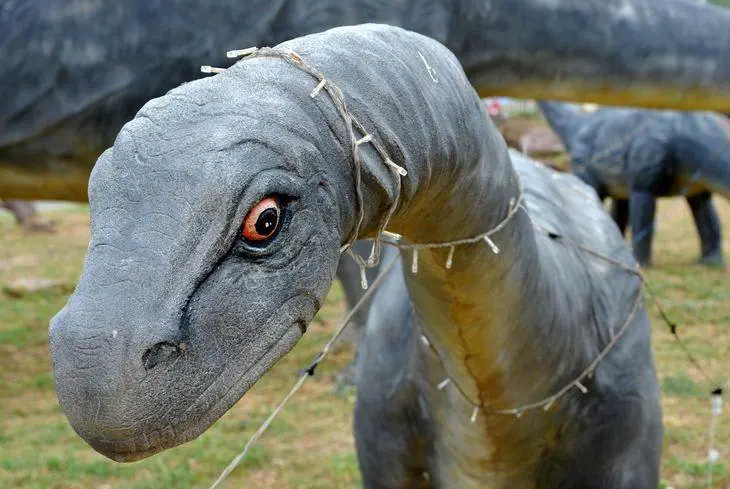
Officially called the Phuwiang Fossil Research Center and Dinosaur Museum, this is what happens when a rural area makes international news. In 1976, a uranium survey team discovered a fossil, which was later discovered to be the left knee bone of a dinosaur. Since then, the area hasn’t stopped being excavated and explored — 1981 saw a Thai-French fossil exploration group to look for more dinosaur remains in the area.
Paleontologists later found fossils of a 15 meter high dino with a long neck and tail. This was the first discovered of its kind, so it was named the Phuwiangosaurus Sirindhornae to honor H.R.H Princess Maha Chakri Sirindhorn. Another species discovered was named Siamosaurus Suteethorni after the discoverer, Mr. Warawuth Suteethorn, and 2009 saw another discovery of the Kinnareemimus khonkaenensis, one of the earliest ornithomimosaurs (ostrich-like dinosaurs).
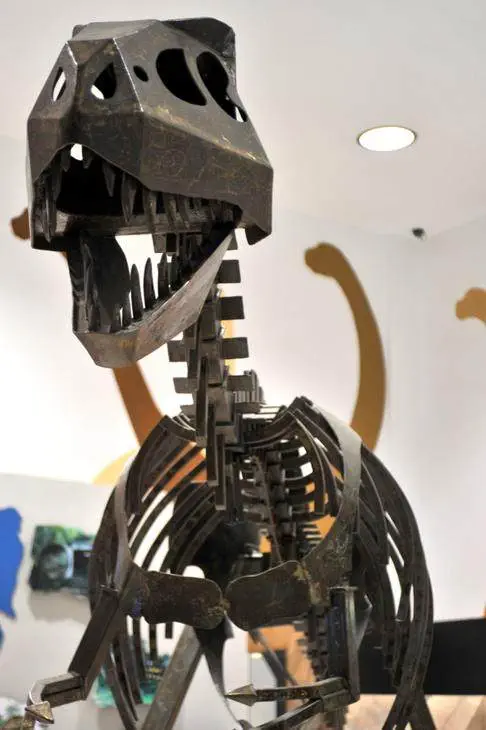
Perhaps the scariest thing to haunt your dreams. Not pictured are plenty of TV monitors with looping videos and English subtitles.
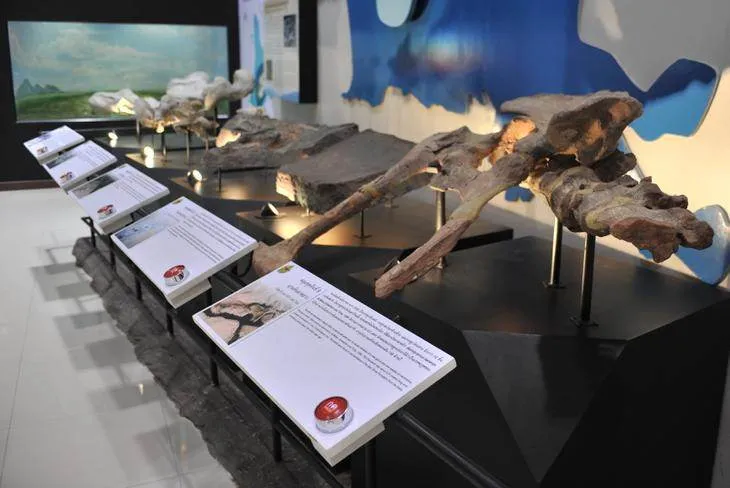
Just a few of the fossils (it’s not clear what’s a real fossil and what’s recreated, but it’s safe to assume whatever people can touch isn’t millions of years old). The left pelvis and 10 caudial vertebrae from a new species were discovered here in 1993. Call it the Siamotyrannus isanensis, as it’s an ancestor of the better-known T-rex.
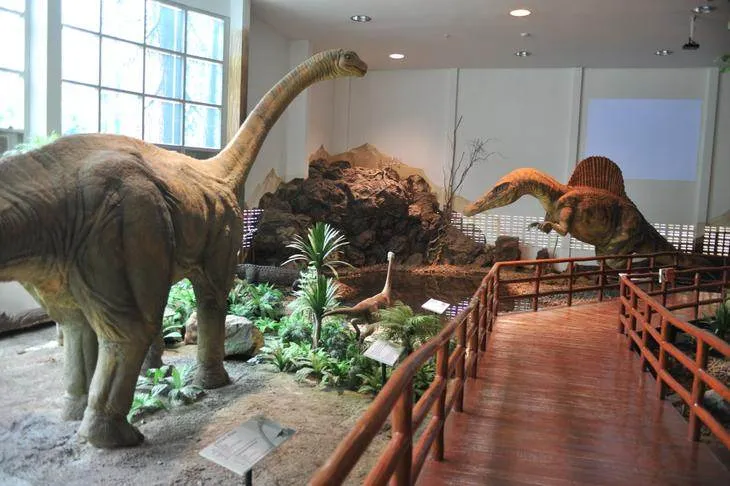
A separate room offers dinosaurs of the ‘what-did-they-look-like’ category.
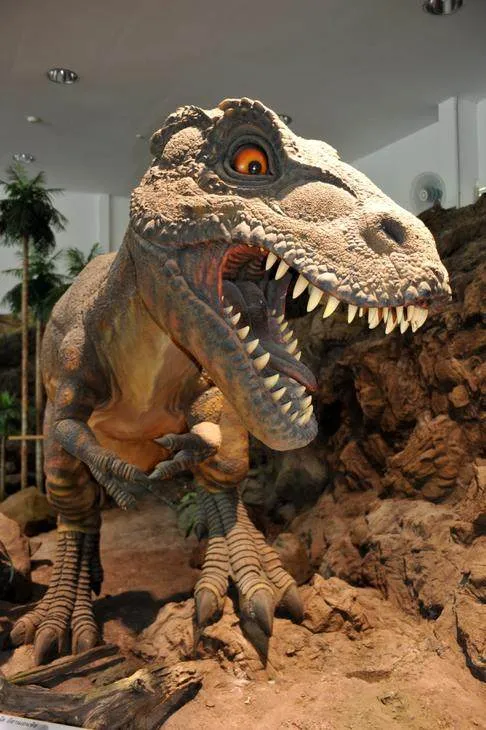
Pretty awesome — like something out of Jurassic Park.
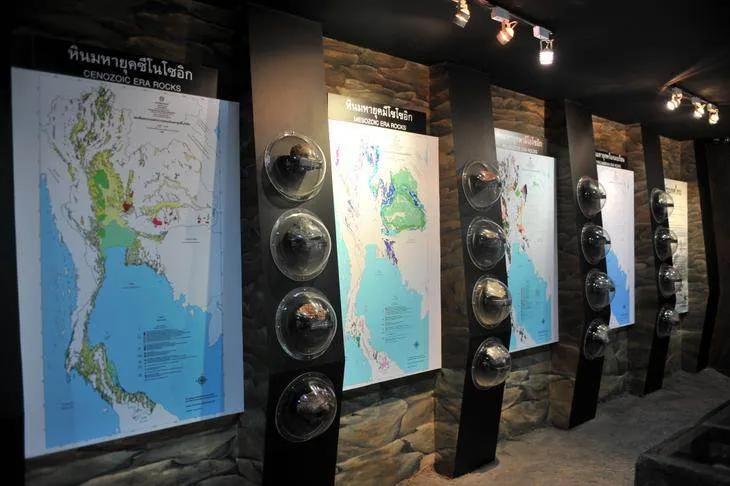
Types of rocks, anyone? The museum as a whole is an excellent introduction to the cosmos — the sort of place you might have gone to on a middle school field trip.
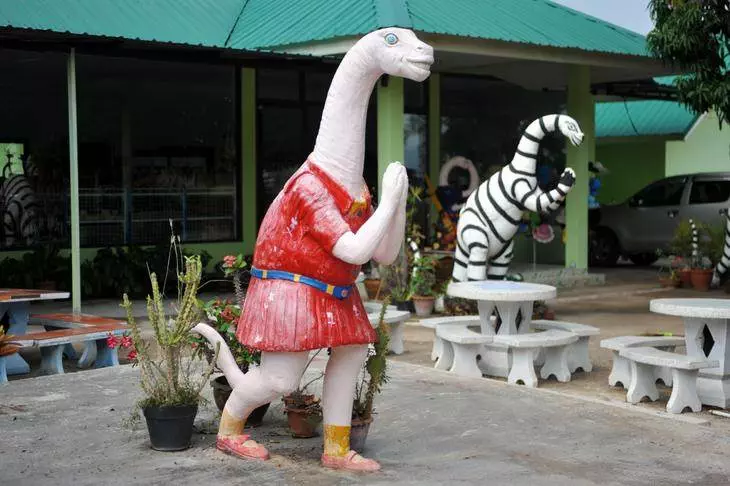
Since this is Thailand, I leave you with dinosaurs doing the wai (the formal Thai greeting) in front of a nearby shop. There isn’t a ton of stuff to see in this part of Thailand, and you’re not going to just stumble across it. If you’re looking to stretch your time here to a full day, the Phu Wiang National Park and two of the sites where fossils were found are nearby. The museum by itself is good for an hour, a half hour more if you have kids or a really enthusiastic adult. Like another dinosaur museum we’ve visited, it’s a lot of fun.
Name: Phu Wiang Dinosaur Museum AKA Phuwiang Fossil Research Center and Dinosaur Museum (พิพิธภัณฑ์ไดโนเสาร์ภูเวียง)
Address: Nai Muang sub-district, Wiang Kao district, Khon Kaen province (GPS: 16.678449, 102.267157)
Directions: It’s about 1 1/2 hours from the Khon Kaen train station — from the train station, take a left and head to the T. Take another left and go another 400 meters to a big intersection. Go about 1 kilometer to another 4-way intersection, then take a left onto Maliwan road / route 12. Stay on route 12 for about 47 kilometers, then be looking for route 2038. Once on route 2038, go another 34 kilometers and follow the well-signed road.
Hours: 9am-5pm (closed on Mondays)
Admission: 60 baht for tourists, 20 baht for Thais or foreigners with work permits.
Phone: 043–438–204 or 043–438–206
Website: http://www.dmr.go.th/main.php?filename=Museum3_en


